Oblivion (2013 film)
5.6 /10 1 Votes
54% Rotten Tomatoes 54% Metacritic Genre Action, Adventure, Mystery Country United States | 7/10 IMDb 2/4 Roger Ebert Release date April 12, 2013 (India) Duration Language English | |||||||||||||||||||||||||||||||||
 | ||||||||||||||||||||||||||||||||||
Release date March 26, 2013 (2013-03-26) (Buenos Aires premiere)April 19, 2013 (2013-04-19) (United States) Writer Karl Gajdusek (screenplay), Michael Arndt (screenplay), Joseph Kosinski (graphic novel original story) Cast (Jack), (Beech), (Julia), (Victoria), (Sykes), (Sally) Similar movies Independence Day , Guardians of the Galaxy , The Martian , Interstellar , Avatar , Jupiter Ascending Tagline Earth is a memory worth fighting for | ||||||||||||||||||||||||||||||||||
Oblivion official trailer 3 2013 tom cruise morgan freeman movie hd
Oblivion is a 2013 American post-apocalyptic science fiction film based on Joseph Kosinski's unpublished Radical Publishing graphic novel of the same name. The film was co-produced and directed by Kosinski. It stars Tom Cruise, Morgan Freeman, Andrea Riseborough, and Olga Kurylenko. The film was released in the U.S. on April 19, 2013. According to Kosinski, Oblivion pays homage to science fiction films of the 1970s.
Contents
- Oblivion official trailer 3 2013 tom cruise morgan freeman movie hd
- Oblivion official trailer 1 tom cruise sci fi movie hd
- Plot
- Cast
- Development
- Casting
- Filming
- Music
- Marketing
- Theatrical release
- Home media
- Box office
- Critical response
- References
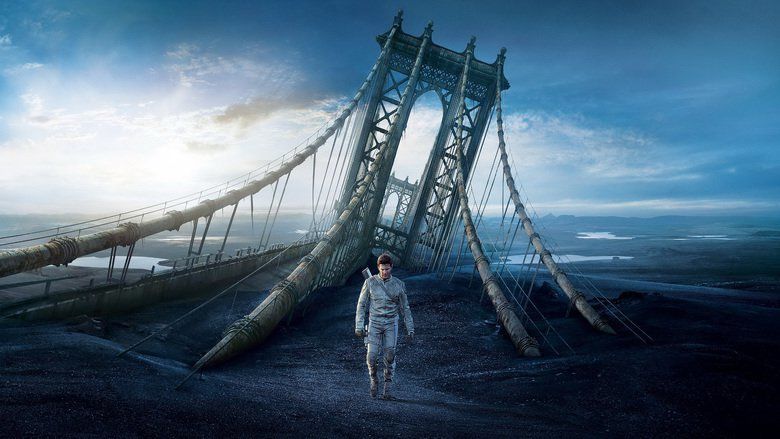
Oblivion received mixed reviews. The acting, especially Cruise's performance, the originality, the visual style and effects were praised, while reception of the plot was mixed. Reviewers criticized the film's incorporation of elements from other sci-fi films and what Rotten Tomatoes called a "thinly scripted" story. However, it was a modest commercial success, grossing $286 million worldwide against a $160 million budget.
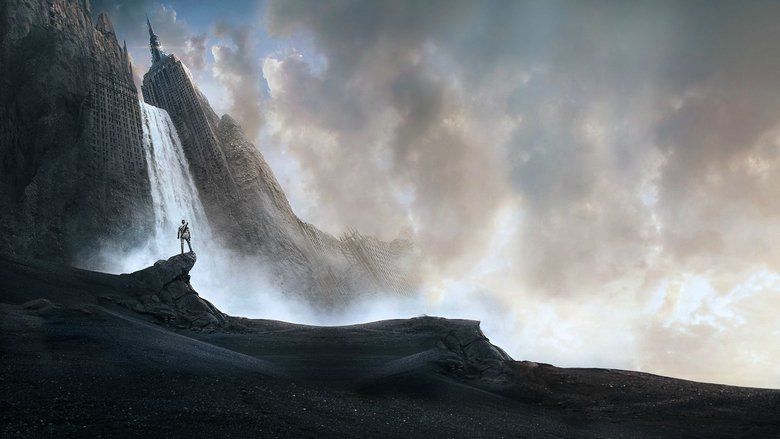
Oblivion official trailer 1 tom cruise sci fi movie hd
Plot
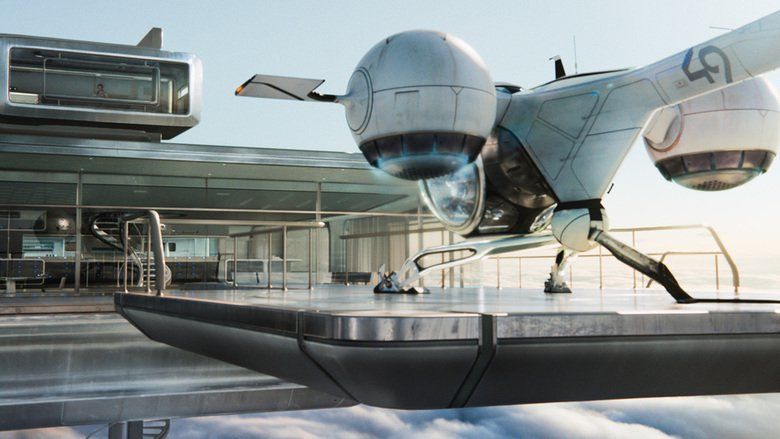
In 2077, sixty years after a war with extraterrestrials that devastated Earth in 2017, humanity has relocated to Saturn's moon Titan via a giant space station called the Tet. Gigantic offshore fusion energy generators drain Earth's oceans to power the colonies on Titan.
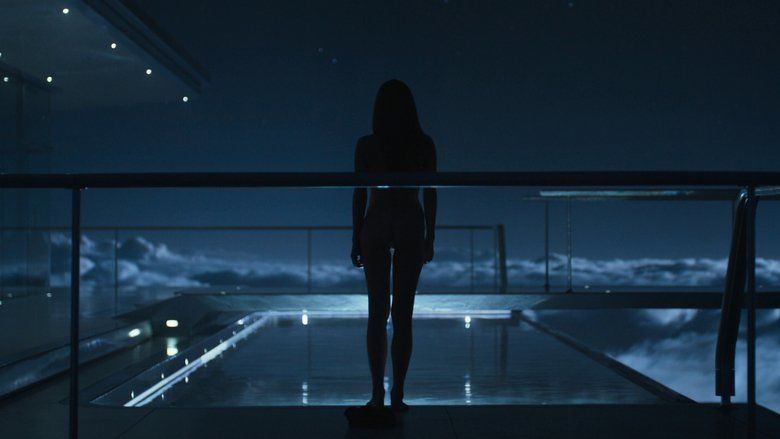
Led by mission controller Sally and guided by his housemate and communications partner Victoria "Vika" Olsen, "Tech-49" Jack Harper regularly leaves his tower post to repair downed combat drones that guard the regions and generators against the alien scavengers or "scavs." Although his memory has been wiped, he has had recurring dreams and visions of being on the observation deck of the Empire State Building with a dark-haired woman. He also collects the occasional artifact he finds from humanity's past. Vika is concerned about Jack's curiosity, questioning whether they are still “an effective team,” and encouraging him to do his job so they can join the others on Titan soon.
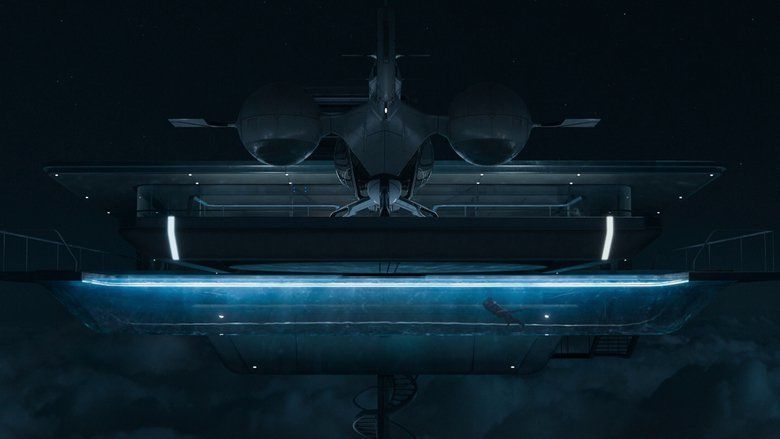
After scavs destroy a generator, Jack discovers the scavs have been using the Empire State Building's antenna to transmit coordinates to outer space. While taking a break at his secret lake house retreat, he watches a crash-landing module of a pre-war spacecraft called the Odyssey. Thinking the ship contains aliens, he investigates, only to find humans in stasis chambers. One of the humans is the woman from his dreams. Jack protects her chamber from a drone that destroys the others, and later revives the woman, Julia Rusakova, who makes Vika instinctively jealous. Jack and Julia return to recover her flight recorder but are captured by the scavs. They are taken to their headquarters at the Raven Rock Mountain Complex, and the scavs are revealed to be human survivors.
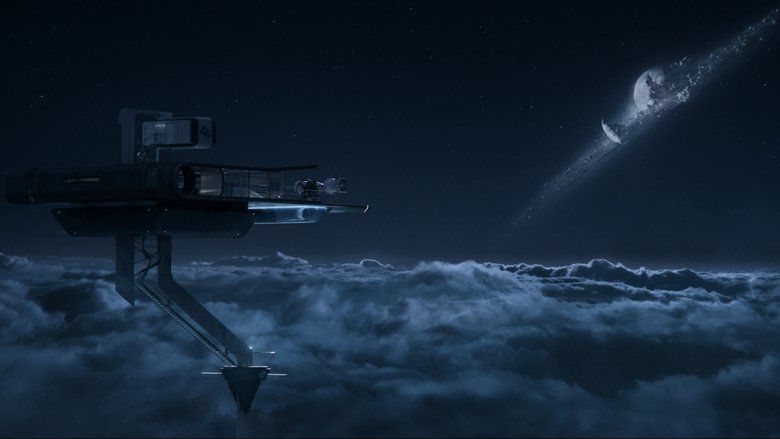
Their leader, Malcolm Beech, wants Jack to reprogram their captured drone to carry nuclear fuel cells to blow up the Tet; he has sensed Jack is different because the latter's hobby of collecting relics. Although Jack refuses, Beech releases them to seek the truth beyond the boundaries of the forbidden radiation zone. When they reach the Empire State Building, Julia reveals that she is his wife. Jack then remembers that he proposed to her there. Julia recalls she was on a mission to Titan when they were diverted to investigate an alien presence.
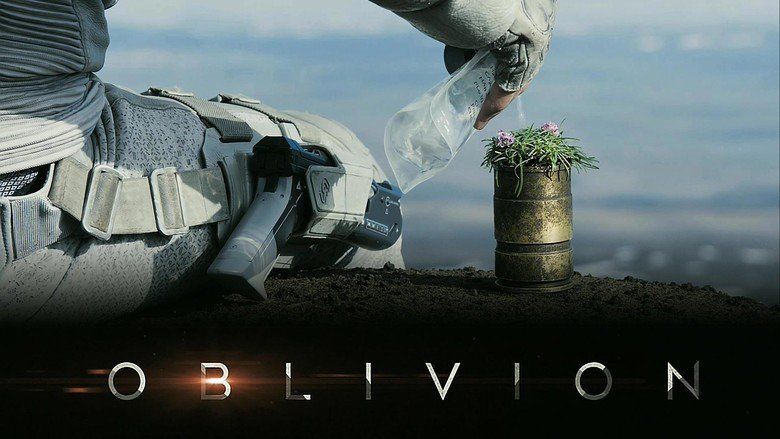
When the two return to Jack's tower, Vika refuses them entry and reports her findings to Sally, saying they are "no longer an effective team." Sally acknowledges this, but activates a drone that kills Vika before Julia shoots it down. Jack and Julia escape in his ship, but are shot down by other pursuing drones. The two eject into the radiation zone, which turns out to not be radioactive. Jack discovers another ship with a technician trying to fix a downed drone, and is shocked to see that the tech is a clone of himself who goes by "Tech-52". The clone also is shocked to see Julia. Jack fights and incapacitates his clone, but Julia is accidentally shot. After flying to Tech-52's tower, and discovering an inquisitive Vika clone, he returns to treat Julia at the lake house.

At the scav base, Beech reveals to Jack and Julia that the Tet was an alien artificial intelligence that destroyed the Moon, causing massive devastation to the planet, and invaded Earth with thousands of Jack clones and drones to wipe out the human race, extracting all of the planet's natural resources before moving on. As Jack repairs the captured drone, the base is attacked by other drones, gravely injuring Beech and ruining the captured drone except for its fuel cells. Jack agrees to deliver Julia to Sally through the stasis chamber. On the way to the Tet, Jack listens to the Odyssey's flight recorder, and learns that he was the mission commander, Vika was his co-pilot, and Sally was their mission controller from Earth. When the Tet started to draw in their ship, Jack jettisoned the pod of stasis chambers containing the crew members (including Julia) leaving himself and Vika to be captured.
Back in the present, Jack enters a large room full of capsules of Jack and Vika clones. He shows Tet the stasis chamber, but it carries Beech and the fuel cells, which they then detonate. On Earth, Julia awakens at the lake house. Three years later, she and her daughter meet the resistance members and "Tech-52" Jack, who has also recovered his memories.
Cast
Development
Kosinski wanted to film a cinematic adaptation of the graphic novel Oblivion, which he started to co-write with Arvid Nelson for Radical Comics. The novel, however, was never finished, as Koskinski now admits that "It was just a stage in the project [of film development]". He explained in an interview with Empire that "partnership with Radical Comics allowed me to continue working on the story by developing a series of images and continuing to refine the story more over a period of years. Then I basically used all that development as a pitch kit to the studio. So even though we really never released it as an illustrated novel the story is being told as a film, which was always the intention."
Walt Disney Pictures, which produced Kosinski's previous direction Tron: Legacy, acquired the film adaptation rights to Oblivion in August 2010 after a heated auction. Disney subsequently released the rights after realizing the PG-rated film they envisioned, in line with their family-oriented reputation, would require too many story changes. Universal Pictures, which had also bid for the original rights, then bought them from Kosinski and Radical Comics and authorized a PG-13 film version.
The script for the film was originally written by Kosinski and William Monahan and underwent a first rewrite by Karl Gajdusek. When the film passed into Universal's hands, a final rewrite was done by Michael Arndt. Universal was particularly appreciative of the script, saying "It's one of the most beautiful scripts we’ve ever come across."
The Bubble Ship operated by Cruise's main character, Jack 49, was inspired by the Bell 47 helicopter (often colloquially referred to as a "bubble cockpit" helicopter), a utilitarian 1947 vehicle with a transparent round canopy that Kosinski saw in the lobby of the Museum of Modern Art in Manhattan, and which he likened to a dragonfly. Daniel Simon, who previously worked with Kosinski as the lead vehicle designer on Tron: Legacy, was tasked with creating the Bubble Ship from this basis, incorporating elements evocative of an advanced fighter jet with the Bell 47 to create a light, functional vehicle that was both practical and aesthetically pleasing, much as he observed with the ships in 2001: A Space Odyssey.
"When Kubrick made 2001, rather than going to the hotshot concept designers of the day, he hired NASA engineers," said Simon. "I believe in form follows function. I'm not a fan of excessive decoration, of putting fins on something because it looks cool." Rather than employ digital models, Wild Factory, a Camarillo concept car company, built the Bubble Ship as a 25-foot-long (7.6 m), 4,000–5,000 lb (1,800–2,300 kg), mostly aluminum prop. Elements of the cockpit, such as the placement of the joystick and pedals, were customized for Cruise, who is a pilot in real life, and who had some input into the design. The craft was also made to be easy to disassemble and assemble, in order to facilitate transport to the Iceland shooting locations, where it would be mounted on a gimbal for shots of it flying. The unmanned aerial drones that figure prominently in the plot were created to appear to be in the same design family as the Bubble Ship.
Casting
Tom Cruise had expressed interest in the film for a long time, and officially committed to it on May 20, 2011.
For casting the lead role of Julia opposite Cruise, the producers considered five actresses: Jessica Chastain, Olivia Wilde, Brit Marling, Noomi Rapace and Olga Kurylenko, and all five auditioned on August 27, 2011. It was subsequently announced that Chastain would play one of the film's two female leads. In January 2012 Chastain entered into talks for a part in the Kathryn Bigelow film Zero Dark Thirty and subsequently dropped out of Oblivion contention. It was later announced that the role had been given to Kurylenko.
In preparation for the role, Kurylenko watched astronaut training videos as well as classic science fiction and romance films (such as Solaris, Notorious, and Casablanca). "What's funny is I actually watched Solaris; Joseph never brought it up," said Kurylenko. "I come from Tarkovsky-land, and at that point I hadn't watched it for many years. I watched the new one as well, with George Clooney and Natascha McElhone. The story – both in Solaris and Oblivion – deals with space and memory."
For the other leading role, Victoria, the producers initially considered Hayley Atwell, Diane Kruger and Kate Beckinsale. The three actresses traveled to Pittsburgh to screen-test with Cruise, who was filming Jack Reacher. The role finally went to Andrea Riseborough. Melissa Leo was cast at a later date as Sally.
Filming
Production began on March 12, 2012, and concluded on July 14, 2012. Filming locations included Baton Rouge and New Orleans, Louisiana. Out of approximately three months of shooting, 69 days were shot in Louisiana, from March through May 2012, 11 days were shot in New York in June 2012, a few in Mammoth in California in June 2012, and 10 days were filmed in Iceland in June 2012, when the daylight lasts for nearly 24 hours a day. As well as showcasing Iceland's volcanic landscapes, the film's director Joseph Kosinski sought to take advantage of the round-the-clock light, in particular the 6pm to 1am waning light known as "magic hour", to "bring sci-fi out into the daylight", in contrast with films such as Alien, which spent their time in dark hulls or benighted planets.
The single most difficult scene to film in the entire movie was when Harper takes a break to admire the view and waters a flower. It was filmed by having Cruise sit next to an 800-foot (250 meters) drop at the top of Iceland's Jarlhettur on the root of Langjökull, which is accessible only by helicopter. The scenes set at Harper's idyllic forest retreat were filmed at Black's Pond in June Lake, California.
Oblivion was filmed with Sony's CineAlta F65 camera, which was shipped in January 2012. A Red Epic was also used for scenes that required going handheld or when body mount rigging was applied. The film was shot in 4K resolution in Sony's proprietary raw image format, but for cost reasons (and over Kosinski's protests), both the digital intermediate and final version were done at 2K resolution.
For the Sky Tower set (built on a soundstage in Baton Rouge), Kosinski and cinematographer Claudio Miranda worked closely with visual special-effects house Pixomondo to establish both environment and lighting by the use of 21 front-screen projectors aimed at a huge wraparound backdrop to form one continuous image, rather than blue screen backdrops. The backdrop consisted of a single seamless piece of painted white muslin, 500 feet by 42 feet (150 by 13 meters), which was wrapped around the set for 270-degree coverage. This enabled the full environment to be captured in camera, and assisted in lighting up to 90 percent of the set.
If they had used blue screen on a "glass house" set like the Sky Tower, the glass would literally have disappeared into the blue lighting, and the VFX people would have been forced to reconstruct most of the set in post-production. Naturally, "the actors loved being in it" since unlike blue screen, they could look outside and actually see a sunrise or sunset. This new technique allowed them to cut down on both the effects shots, which ended up at around 800 in total, and the expenses. Even the "control table" which Victoria operates was filmed then displayed on a large screen.
To obtain the necessary footage to create the illusion that the Sky Tower set was sitting high above the clouds, Pixomondo sent a crew to film the view from the peak of Haleakalā in Hawaii for four days with three Red Epic cameras mounted side-by-side on a single rig. Pixomondo's Stuttgart office then stitched together the data from the three cameras to form a single gigantic video stream (with each still image consisting of 26 megapixels), and produced a variety of different time-of-day clips to be projected on the set.
Music
On June 28, 2012, it was announced that French electronic band M83 would compose the soundtrack for Oblivion. On why he chose M83 to score the film, director Joseph Kosinski said, "I went back and I found my first treatment for Oblivion from 2005 and it had listed in the treatment a soundtrack of M83. Obviously the Tron: Legacy collaboration with Daft Punk worked out as good as I would have ever hoped, [so] I wanted to do something similar in that I’m pulling an artist from outside the movie business to create an original sound for this film." Kosinski continued, "Daft Punk’s music wouldn’t make sense for this movie. It had to be an artist whose music fit the themes and story I was trying to tell. And M83’s music I felt was fresh and original, and big and epic, but at the same time emotional and this is a very emotional film and it felt like a good fit."
To guide Anthony Gonzalez of M83 through the scoring process, director Kosinski brought in Joseph Trapanese, who co-wrote the score alongside Gonzalez. Kosinski states, "Together they have created the score that I have dreamed about since I first put this story down on paper eight years ago." Trapanese first came to Kosinski's attention when he collaborated with Daft Punk on Tron: Legacy as arranger and orchestrator.
In an interview with Rolling Stone, M83 frontman Anthony Gonzalez said, "I started to write the soundtrack just reading the script, and then when you get the picture in, it's different, and you kind of switch to another vibe and change stuff and start experimenting a lot with the music." Gonzalez added, "I worked with Joseph a lot, and he's very particular about the music in his movies, so we spent a lot of time talking about music and working the arrangements together."
The soundtrack album was released on April 9, 2013, by Back Lot Music. A deluxe edition of the soundtrack was released the same day exclusively through iTunes. It features an additional 13 tracks.
Marketing
Details about Oblivion were kept secret, though the studio was said to have been "very excited" about the film. Promotions began April 2012, with a part of the footage being screened at the 2012 CinemaCon despite the fact that filming had begun just one month prior to the event. The footage was described as "a combination of early concept art, rough animation, and unfinished dailies," showcasing a glimpse of the film's landscapes.
Theatrical release
Oblivion was first presented in Buenos Aires on March 26, 2013, Dublin on April 3, and in Hollywood on April 10 at the Dolby Theatre where Cruise himself announced before the screening that the film was actually the first feature to be mixed completely "from start to finish" in the latest state-of-the-art Dolby Atmos surround sound.
Home media
The DVD and Blu-ray for Oblivion became available online for pre-order in North America on April 24, 2013, just five days after its initial release in the region. One month later it was announced that the United Kingdom branch of Universal Studios would be releasing the film on home video in its region on August 6, 2013 with the on-demand version on August 18, 2013. The release was scheduled to be in both a standard and a SteelBook Limited Edition form. In June 2013, it was announced that the film would be released on home video in America also on August 6, 2013. The Blu-ray releases will feature commentary with Tom Cruise and director Joseph Kosinski, deleted scenes, M83's isolated score, and a series of making-of featurettes. The Blu-ray debuted at number 1 in sales for its opening week.
Box office
In North America, the film earned $37.1 million on its opening weekend, including $5.5 million from IMAX screenings in 323 theaters, making it Cruise's best North American opening after Mission: Impossible film series and War of the Worlds.
The film closed on June 27, 2013. Oblivion grossed $89,107,235 in the U.S. and $197,061,337 internationally, bringing the worldwide total to $286,168,572.
Critical response
On review aggregation website Rotten Tomatoes, the film has an approval rating of 53% based on 228 reviews, with an average score of 5.9/10. The site's critical consensus reads, "Visually striking but thinly scripted, Oblivion benefits greatly from its strong production values and an excellent performance from Tom Cruise." Metacritic gives the film a score of 54 out of 100, based on 41 critics, indicating "mixed or average reviews".
Todd McCarthy of The Hollywood Reporter stated "Oblivion is an absolutely gorgeous film dramatically caught between its aspirations for poetic romanticism and the demands of heavy sci-fi action". Justin Chang of Variety said "Insofar as Oblivion is first and foremost a visual experience, a movie to be seen rather than a puzzle to be deciphered, its chief pleasures are essentially spoiler-proof." Kevin Harley of Total Film gave the film three stars and said "It isn’t a reboot or reimagining, refreshingly, but Oblivion plays like a stylised remix of superior sci-fi ground-breakers". Andrew O'Hehir of Salon praised it as a "...sly, surprising and visually magnificent Tom Cruise vehicle that has forced me - and many other people, I suspect - to revise my first opinion of director Joseph Kosinski."
Tasha Robinson from The A.V. Club states that an "...unsettling sense of not-quite-right coats all of the film's steely surfaces, and Kosinski and his co-writers give audiences plenty of time to absorb the unease and gear up for the action." Some reviewers noted the filmmakers' ambition. James Berardinelli of ReelViews calls the film "...imperfect but some of its imperfections result from being overly ambitious." Bill Goodykoontz from the Arizona Republic states that the film "...may not live up fully to its grand ambitions, but it isn't for lack of trying." Jake Coyle of the Associated Press states that "...[f]or those who enjoy the simple thrill of handsomely stylized image-making, Oblivion is mostly mesmerizing." Alan Scherstuhl from the Village Voice states that "... Kosinski proves himself talented in ways his Tron: Legacy didn't suggest."
Kenneth Turan from the Los Angeles Times called the film "[m]ore adventurous than your typical Hollywood tent pole, Oblivion makes you remember why science fiction movies pulled you in way back when and didn't let you go." Michael O'Sullivan of the Washington Post states that "...[i]f you're able to forgive and forget, Oblivion isn't a bad place to start loving Tom Cruise all over again." Steven Rea of the Philadelphia Inquirer states that "[Cruise] oversees some pretty impressive stuff here, from the drones that ping-pong around in the air to the bubbleship that Jack uses to go to and fro to that awesome house with its panoramic views." Peter Howell of the Toronto Star states that the film "...gives us stars in the cast, stars in our eyes and it even tweaks a brain cell or three."
Colin Covert from the Minneapolis Star Tribune states that the "....film is rife with elements from its finest predecessors - Kubrick, Lucas, the Wachowskis and Pixar could be listed as creative consultants - but it has the spirit of a love letter to classic sci-fi, not an opportunistic mash-up." Cary Darling of the Fort Worth Star-Telegram states that the film is "stitched together from spare bits of other, often better films, stumbl[ing] awkwardly in story and plot, shuffling toward the predictable explosions and fireballs of the third act. Yet... Oblivion is so beautiful to look at."
Richard Corliss of TIME stated that "[i]n space, Jack [Harper] hopes, someone may hear you dream. But in a movie theater, no one will see you yawn." Anthony Lane of The New Yorker states that the film "[f]eels ever more grounded and stuck." Richard Roeper of Richard Roeper.com called it the "...sci-fi movie equivalent of a pretty damn good cover band." Tom Charity of CNN.com called it "[g]lossy, derivative, ambitious and fatally underpowered." J. R. Jones of the Chicago Reader states that the "...story eventually devolves into a grab bag of sci-fi tropes but, as with so many other Cruise productions, the sheer scale of everything is so mind-numbing that you may not notice." Rick Groen of Canada's Globe and Mail called it "...an okay blockbuster, a multimillion-dollar exercise in competence."
Tom Long of the Detroit News states that "Kosinski offers plenty of action here, and he lets the plot reveals bleed out slowly (explanations keep coming right to the end)." Long states that "...a great deal is derivative, but it's fast-moving derivative." Stephen Whitty of the Newark Star-Ledger states that the movie "...combines a lot of different films, yet somehow remains less than the sum of its parts." Claudia Puig of USA Today states that "...Kosinski focuses on cool visuals but stints on a compelling plot. It's a dazzler, but the story lacks the impact of the futuristic look." Joe Morgenstern of the Wall Street Journal states that the "... mystery posed by Oblivion as a whole is why its mysteries are posed so clumsily, and worked out so murkily."
Manohla Dargis of The New York Times states that the "...agony of being a longtime Tom Cruise fan has always been a burden, but now it's just, well, dispiriting." Rafer Guzman of Newsday states that "[p]laying spot-the-influence is the most fun you'll have during this expensive-looking, slow-moving plod through familiar territory." Joe Williams of the St. Louis Post-Dispatch states that "...[i]nstead of developing characters, Kosinski pours most of his imagination into the annihilated landscapes and futuristic gadgetry." Michael Phillips of the Chicago Tribune states that "[w]hen you go to a futuristic, dystopian, post-apocalyptic barn dance starring Tom Cruise and his space guns, you expect a little zap with your thoughtful pauses." Peter Travers of Rolling Stone calls it "...arid and antiseptic, untouched by human hands."
Rene Rodriguez of the Miami Herald states that the "...filmmakers don't even have the courage to see the story to its proper end, opting for a ridiculous finale that feels vaguely insulting." Soren Anderson from the Seattle Times states that "[y]ou start wondering whether director Joseph Kosinski and screenwriters Karl Gajdusek and Michael DeBruyn have any original ideas of their own. And then you realize they don't." Randy Myers of the San Jose Mercury News states that the "...mix of gee-whiz gadgetry and the day-to-day routineness of Jack and Victoria's lives is interesting enough, but the film is too glacially paced for it to work." Chris Nashawaty of Entertainment Weekly states that "...[a]ll the eye candy in the world can't mask the sensation that you've seen this all before...and done better. Too bad the movie's script wasn't given the same attention as its sleek, brave-new-world look."
References
Oblivion (2013 film) WikipediaOblivion (2013 film) IMDbOblivion (2013 film) Rotten TomatoesOblivion (2013 film) Roger EbertOblivion (2013 film) MetacriticOblivion (2013 film) themoviedb.org
